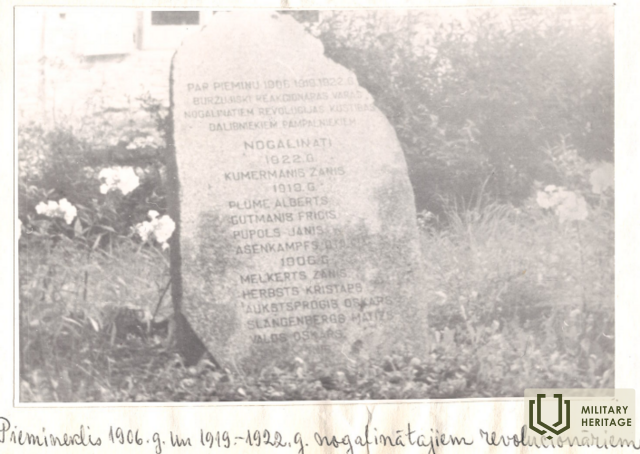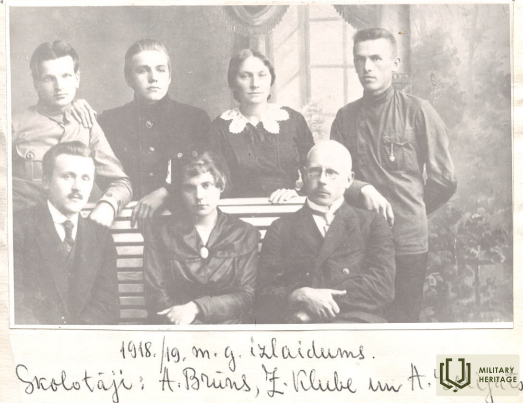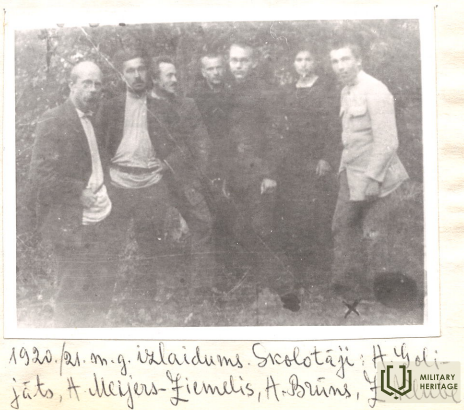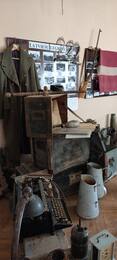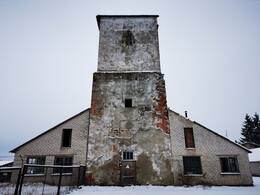How Latvian government officials fooled the Bolshevik supporters of Pampali
The former principal of the Pampāļi School (until 1959), Alfrēds Brūns, has personally typed an impressive book about the history of the Pampāļi School and historical events surrounding it, with authentic photographs. In the book, A. Brūns describes the events of the War of Independence in Pampāļi, describing in detail the events involving Latvian statesmen, Bolshevik supporters, the actions of the German army, etc.
[…] 1919
In 1919, around January 6, members of the Latvian government and People's Council fled to Liepāja via various routes, avoiding the Bolshevik streams flowing towards Venta.
A former student of ours (who graduated in 1914 [school year]), Žanis Kummermanis, had organized a Bolshevik group in the Pampāļi manor and was already ruling Pampāļi for several days before the appearance of Soviet troops in Pampāļi.
Fricis Vecpuisis, the owner of the Stunguri houses, the head of the Ulmanis government's war construction department, an officer with some other Latvian state employees, while retreating to Liepāja, had driven into "Stunguri" in a good, government-requisitioned limousine to spend the night. A group of Pampāli partisans were informed about this and immediately arrived in "Stunguri" to take the limousine to Pampāli. Vecpuisis did not resist - let him take it, because he could not go any further anyway, the gasoline had run out to the last drop. The simple servants of the manor believed him and went to Pampāli with such a message. Having found out there what kind of official Vecpuisis was, they set off early in the morning with 4 or 6 of the best horses to transport the car. They found neither the limousine, nor Vecpuisis, nor other government men in "Stunguri."
The archive contains information that Fricis Vecpuisis, born in 1890, from the Stunguri house, was deported on June 14, 1941.
Level: Case Number: 20035
==
The former director of the Pampāļi School (until 1959), Alfred Brown, has personally typed an impressive book about the history of the Pampāļi School and historical events surrounding it, with authentic photographs. The book is in Pampāļi, at the home of Artūrs Hartmanis, who owns an impressive private collection of various antiques and World War II artifacts found in the Pampāļi area.
Latvian State Archives (rtu.lv)
www.itl.rtu.lv/LVA/index3.php?id=9009&kods=14072&vien=5
Related timeline
Related objects
Pampali Church and the walls of the shot-up house
Pampāļi is a settlement in Pampāļi parish, Saldus municipality, the center of the parish on the banks of the Zaņa River and its tributary Abrupe, 27 km from the county center Saldus and 147 km from Riga. The settlement developed around the center of the Pampāļi manor after the agrarian reform. In 1933, Pampāļi was granted the status of a densely populated area.
The hostilities at the gates of Pampāli began on November 21, 1944, when the Soviet 4th Shock Army, forcing the Venta River, launched an attack in the direction of Saldus. By November 24, the situation stabilized and the front line remained unchanged until December 21.
On December 21, 1944, the so-called 3rd Battle of Courland began, during which the 4th Shock Army of the 1st Baltic Front with 4 rifle corps (12 rifle divisions) and the 3rd Guards Mechanized Corps attacked in the direction of Saldus to link up with units of the 2nd Baltic Front. The German 132nd Infantry Division defended the Pampāli area, whose 1st Battalion of the 436th Grenadier Regiment was fortified in the area of the manor and church.
The attack on Pampāli was carried out by the 357th and 145th Rifle Divisions of the 1st Rifle Corps, supported by massive artillery fire, and the 39th Guards Tank Brigade. Within the first 24 hours of the battle, the Pampāli garrison, commanded by Captain Eberard Coll, commander of the 14th (anti-tank) company of the 436th Grenadier Regiment, was surrounded and practically destroyed in fierce fighting.
Since Pampāļi was located right on the front line, all the buildings suffered from artillery fire and have practically not survived today.





